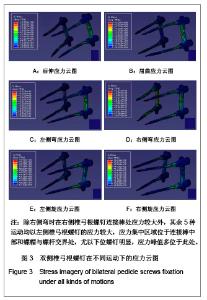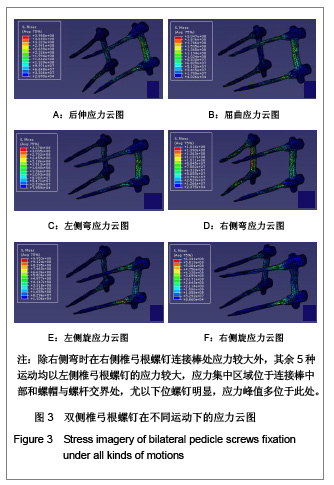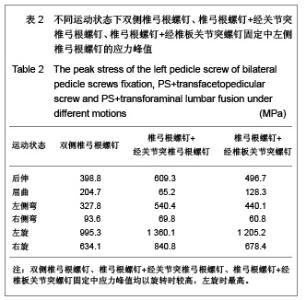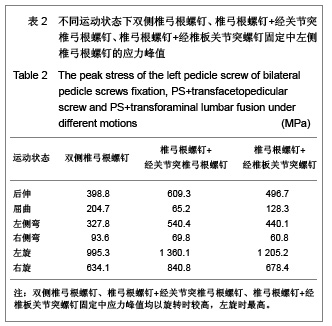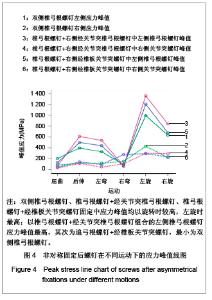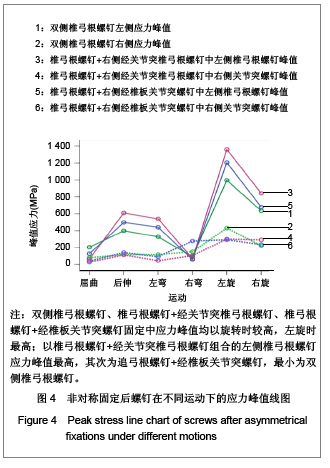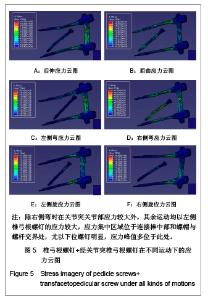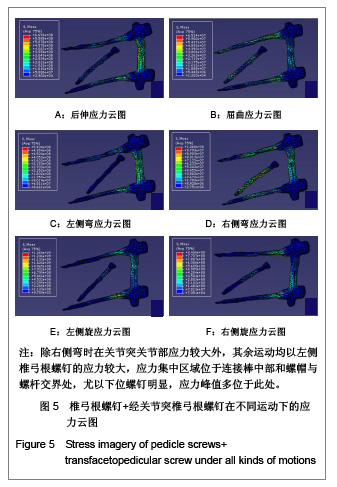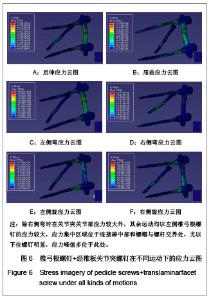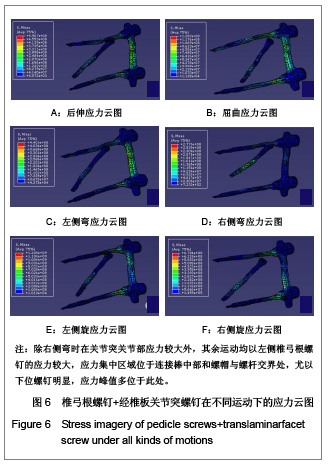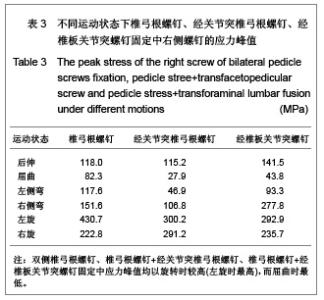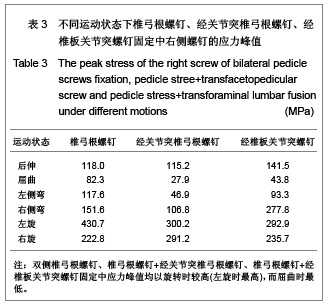| [1] Harms J,Rolinger H.A one-stager procedure in operative treatment of spond- yloistheses: dorsal traction-reposition and anterior fusion. Z Orthop Ihre Grenzgeb.1982;120(3): 343-347.[2] Schwender JD, Holly LT, Ruben DP, et al. Minimally invasive transforaminal lumbar interbody fusion (TLIF): Technical feasibility and initial results. Spinal Disorder Tech.2005;18 Suppl: S1-6.[3] Kandziora F, Schleicher P, Scholz M, et al. Biomechanical testing of the lumbar facet interference screw. Spine. 2005; 30(2):E34-39.[4] Slucky AV, Brodke DS, Bachus KN, et al. Less invasive posterior fixation method following transforaminal lumbar interbody fusion: a biomechanical analysis. Spine.2006;6(1): 78-85.[5] Schleicher P, Beth P, Ottenbacher A, et al. Biomechanical evaluation of different asymmetrical posterior stabilization methods for minimally invasive transforaminal lumbar interbody fusion. Neurosurg Spine.2008;9(4): 363 -371.[6] Sethi A, Lee S, Vaidya R. Transforaminal lumbar interbody fusion using uni- lateral pedicle screws and a translaminar screw. Eur Spine.2009;18(3): 430-434.[7] Mao KY, Wang Y, Xiao SH, et al. Zhonghua Wai Ke Za Zhi. 2011;49(12):1067-1070. 毛克亚,王岩,肖嵩华,等.单侧微创经椎间孔腰椎体间融合术采用椎弓根螺钉结合经椎板关节突螺钉混合内固定可行性研究[J].中华外科杂志,2011;49(12):1067-1070.[8] Ao J, Jin AM, Zhao WD, et al. Nanfang Yike Daxue Xuebao. 2009;29(5):959-961,965. 敖俊,靳安民,赵卫东,等.腰椎经椎间孔椎体间融合不对称内固定的生物力学稳定性实验研究[J].南方医科大学学报,2009,29(5): 959-961,965.[9] Vadapalli S, Sairvo K, Goel VK, et al.Biomechanical rationale for using poly- etheretherketone(PEEK) spacer for lumbar interbody fusion-A finite element study. Spine.2006;31(26): E992-998.[10] Schmidt H, Heuer F, Drumm J, et al. Application of a calibration method provides more realistic results for a finite element model of a lumbar spinal segment. Clin Biomech (Bristol, Avon).2007;22(4):377-384.[11] Niosi CA, Zhu QA, Wilson DC, et al. Biomechanical characterization of the three-dimensional kinematic behaviour of the Dynesys dynamic stabilization system: an in vitro study. Eur Spine,2006;15(6):913-922.[12] Heuer F, Schmidt H, Klezl Z, et al. Stepwise reduction of functional spinal structures increase range of motion and change lordosis angle. Biomech.2007;40(2):271-280.[13] Chosa E, Totoribe K, Tajima N. A biomechanical study of lumbarspondy- lolysis based on a3-dimensional finite element method. Orthop Res.2004;22(1):158 -163.[14] Tuttle J, Shakir A, Choudhri HF.Paramedian approach for transforaminal lumbar interbody fusion with unilateral pedicle screw fixation. Technical note and preliminary report on 47 cases. Neurosurg Focus. 2006;20(3):E5.[15] Xue H, Tu Y, Cai M. Comparison of unilateral versus bilateral instrumented transforaminal lumbar interbody fusion in degenerative lumbar diseases. Spine. 2012;12(3):209-215.[16] Rapan S, Jovanovi? S, Gulan G. Transforaminal lumbar interbody fusion (TLIF) and unilateral transpedicular fixation. Coll Antropol. 2010;34(2):531-534.[17] Duncan JW, Bailey RA.An analysis of fusion cage migration in unilateral and bilateral fixation with transforaminal lumbar interbody fusion. Eur Spine. 2012. [Epub ahead of print].[18] Aoki Y, Yamagata M, Ikeda Y,et al.A prospective randomized controlled study comparing transforaminal lumbar interbody fusion techniques for degenerative spondylolisthesis: unilateral pedicle screw and 1 cage versus bilateral pedicle screws and 2 cages. Neurosurg Spine. 2012;17(2):153-159.[19] Chen SH, Lin SC, Tsai WC,et al. Biomechanical comparison of unilateral and bilateral pedicle screws fixation for transforaminal lumbar interbody fusion after decompressive surgery - a finite element analysis. BMC Musculoskelet Disord. 2012;13(1):72. [20] Harris BM, Hilibrand AS, Savas PE, et al.Transforaminal lumbar interbody fusion: the effect of various instrumentation techniques on the flexibility of the lumbar spine. Spine.2004; 29(4):E65-70. [21] Sethi A, Muzumdar AM, Ingalhalikar A, et al. A Biomechanical analysis of a novel posterior construct in a transforaminal lumbar interbody fusion model an in vitro study. Spine. 2011; 11(9):863-869. [22] Jang JS, Lee SH. Minimally invasive transforaminal lumbar interbody fusion with ipsilateral pedicle screw and contralateral facet screw fixation. Neurosurg Spine. 2005; 3(3):218-223.[23] Ao J, Jin AM, Fang GF, et al. Zhongguo Linchuang Jiepouxue Zazhi.2008;26(4):429-432. 敖俊,靳安民,方国芳,等.前路腰椎间融合后路关节突螺钉固定术螺钉应力的有限元研究[J].中国临床解剖学杂志,2008,26(4): 429-432.[24] Schmidt H, Heuer F, Claes L, et al. The relation between the instantaneous center of rotation and facet joint forces—A finite element analysis. Clin Biomech (Bristol, Avon). 2008; 23(3):270-278. |
